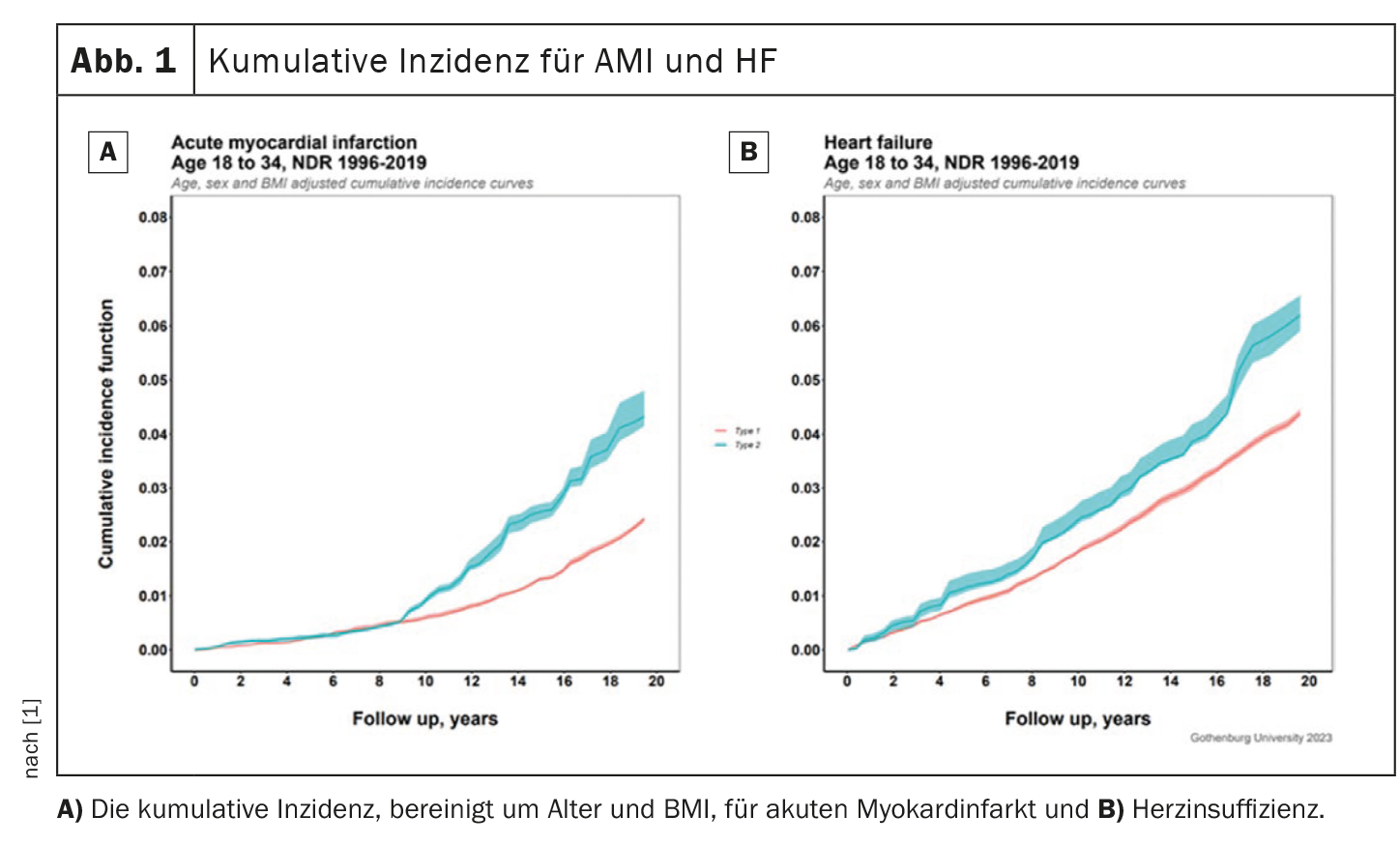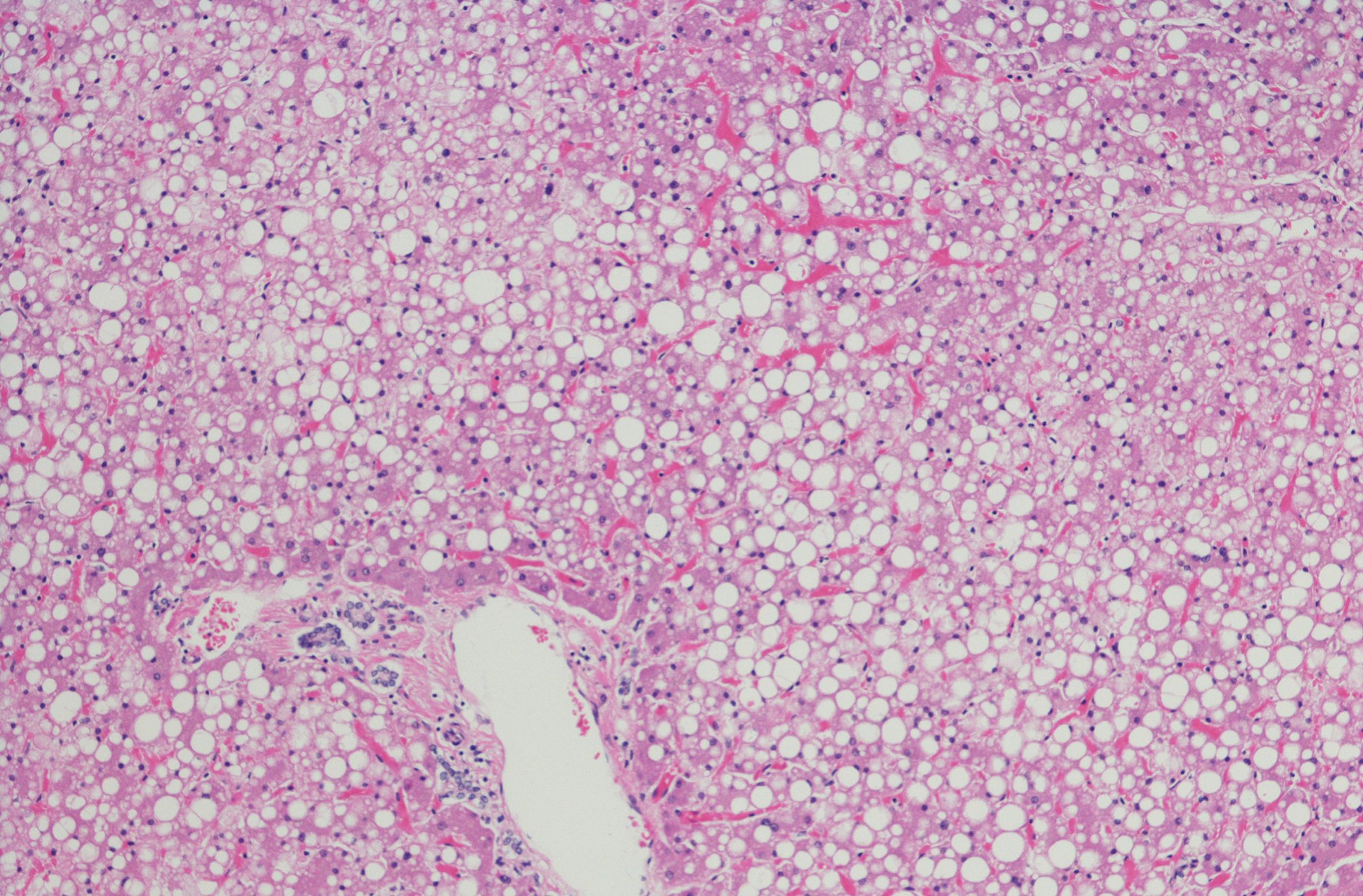Type 1 and type 2 diabetes differ in many ways, but both types are strongly associated with a high risk of cardiovascular complications. T2D at a young age is considered the more lethal of the two phenotypes compared to T1D, but there are few comparisons between the two types. Swedish researchers have compared the risk factors with regard to the outcomes of acute myocardial infarction and heart failure.
The number of cardiovascular diseases in patients with diabetes has tended to fall over the last ten years. This may be due to advances in diabetes treatment, explained Pigi Dikaiou, Department of Molecular and Clinical Medicine, Sahlgrenska Academy, University of Gothenburg [1]. Nevertheless, cardiovascular diseases are still the main cause of death. In addition, the increasing rates of both type 1 and type 2 diabetes could reverse this trend in the future. Controlling the risk factors is therefore crucial for the prevention of cardiovascular disease in diabetes.
The risk of cardiovascular disease in patients with diabetes compared to those without may be due to modifiable risk factors such as obesity, hyperlipidemia, hypertension, smoking and diabetes-specific aspects such as hyperglycemia and micro-/macroalbuminuria. According to the expert, 6 out of 10 deaths from cardiovascular diseases are attributable to these modifiable risk factors.
Dikaiou presented Swedish data showing that the hazard ratio for myocardial infarction in patients with type 1 diabetes and all risk factors was 1.82 compared to control subjects and increased to 12.34 if they had none of these risk factors [2].
Early onset of disease associated with higher mortality
Similar results were found for heart failure. Another study from the National Diabetes Register (NDR) in Sweden in patients with type 2 diabetes showed that the hazard ratio for myocardial infarction was not higher than in controls, especially in those under 55 years of age, but it was higher for heart failure [3].
A study from Australia, which compared 354 people with type 2 diabetes with 870 type 1 diabetics of the same age whose disease began between the ages of 15 and 30, found that early-onset type 2 diabetes had a higher cardiovascular mortality than type 1 [4]. Despite a shorter duration of diabetes and similar metabolic control, the type 2 diabetics had a higher BMI as well as higher albuminuria and biothesiometer findings.
In their review, Dikaiou and her colleague Prof. Dr. Dr. Annika Rosengren compared the risk factors in young patients with type 1 and type 2 diabetes and the results in relation to acute myocardial infarction (AMI) and heart failure (HF) in Sweden [5].
Incidence of AMI and HF higher in type 2
They used data from the Swedish National Diabetes Register to identify all patients with type 1 and type 2 diabetes between the ages of 18 and 34 from 1996 to 2019. This data was linked to the national patient registry to identify cases of AMI and HF between 1998 and 2019. 43,897 patients were included, 32,208 (73.4%) with type 1 and 11,689 (26.6%) with type 2 diabetes. The average age was higher with T2D (approx. 29.1 vs. 23.1 years) and the follow-up time was shorter (7.9 vs. 12.2 years). As expected, the mean duration of diabetes was longer in T1D (8.6 vs. 1.7 years), and patients with T2D had a higher BMI (34.6 vs. 24.3 kg/m2) and a less favorable risk factor profile in terms of lipids, blood pressure and microalbuminuria and had a higher proportion of smokers (21.37% vs. 11.21%). The HbA1c value was higher in patients with type 1 diabetes (65.6 vs. 59.3 mmol/mol).
332 (1.0%) type 1 diabetics and 243 (2.1%) patients with type 2 diabetes suffered an acute myocardial infarction. 142 (0.44%) patients with T1D and 87 (0.74%) with T2D developed heart failure during follow-up. The cumulative incidence of acute myocardial infarction (adjusted for age, sex and BMI) was similar in type 1 and type 2 diabetes during the first nine years of follow-up, after which it was higher in patients with type 2 diabetes (Fig. 1A). The cumulative incidence for HF (also adjusted for age, sex and BMI) was higher in patients with T2D, almost throughout the follow-up (Fig. 1B).
As expected, type 2 had the worse cardiovascular risk factor profile of the two diabetes types and more micro-/macroalbuminuria despite its shorter duration, Pigi Dikaiou concluded. In absolute numbers, type 2 also had a higher risk of AMI and HF, even after adjustment for age and BMI.
Source:
- Dikaiou P: Lecture “Acute myocardial infarction and heart failure in young patients with type 1 and type 2 diabetes”; EASD Congress 2023, Hamburg, 5.10.2023.
Literature:
- Dikaiou P: Lecture “Acute myocardial infarction and heart failure in young patients with type 1 and type 2 diabetes”; EASD Congress 2023, Hamburg, 5.10.2023.
- Rawshani A, et al: Range of Risk Factor Levels. Control, Mortality, and Cardiovascular Outcomes in Type 1 Diabetes Mellitus. Circulation 2017; 135: 1522-1531; doi: 10.1161/CIRCULATIONAHA.116.025961.
- Rawshani A, et al: Risk Factors, Mortality, and Cardiovascular Outcomes in Patients with Type 2 Diabetes. N Engl J Med 2018; 379: 633-644; doi: 10.1056/NEJMoa1800256.
- Constantino Ml, et al: Long-Term Complications and Mortality in Young-Onset Diabetes: Type 2 diabetes is more hazardous and lethal than type 1 diabetes. Diabetes Care 2013; 36: 3863-3869; doi: 10.2337/dc12-2455.
- Rosengren A, Dikaiou P: Cardiovascular outcomes in type 1 and type 2 diabetes. Diabetologia 2023; 66: 425-437; doi: 10.1007/s00125-022-05857-5.
Congress: EASD 2023
InFo DIABETOLOGY & ENDOCRINOLOGY 2024; 1(1): 44 (published on 13.2.24, ahead of print)













